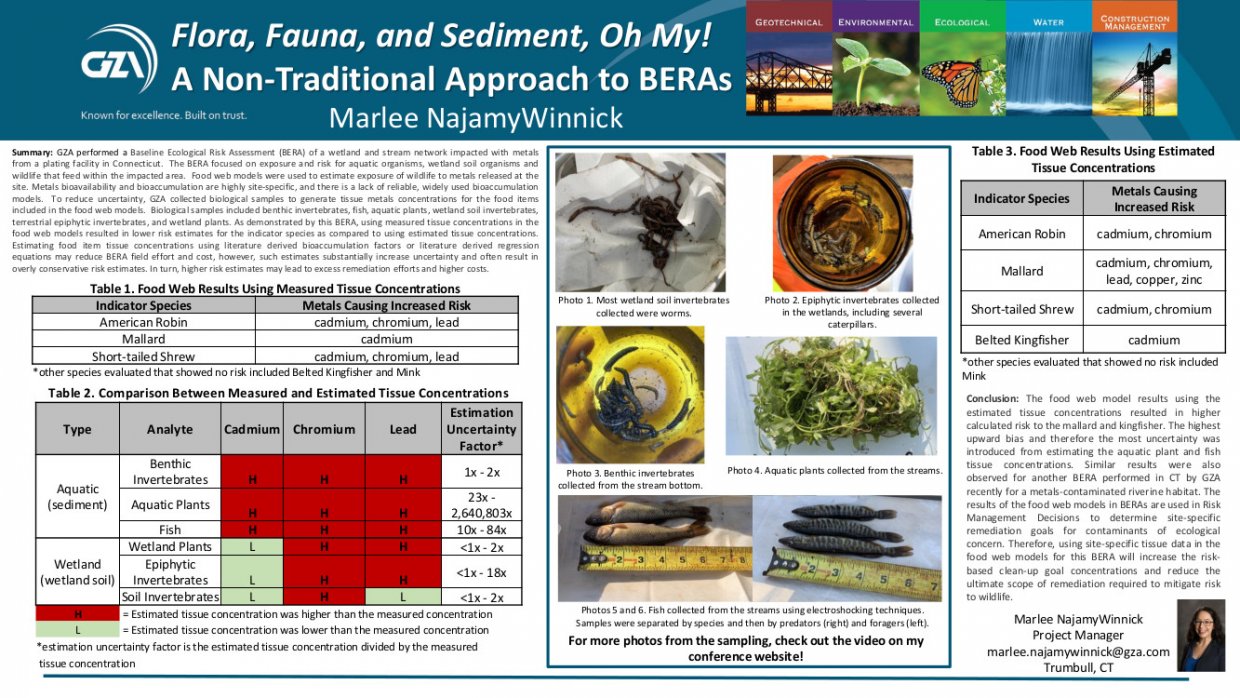Insights
Flora, Fauna, and Sediment, Oh My! A Non-Traditional Approach to BERAs
At a Glance
GZA performed a Baseline Ecological Risk Assessment (BERA) of a wetland and stream network impacted with metals from a plating facility in Connecticut. The BERA focused on exposure and risk for aquatic organisms, wetland soil organisms and wildlife that feed within the impacted area.
Food web models were used to estimate exposure of wildlife to metals released at the site. Metals bioavailability and bioaccumulation are highly site-specific, and there is a lack of reliable, widely used bioaccumulation models. To reduce uncertainty, GZA collected biological samples to generate tissue metals concentrations for the food items included in the food web models.
Biological samples included benthic invertebrates, fish, aquatic plants, wetland soil invertebrates, terrestrial epiphytic invertebrates, and wetland plants. As demonstrated by this BERA, using measured tissue concentrations in the food web models resulted in lower risk estimates for the indicator species as compared to using estimated tissue concentrations.
Estimating food item tissue concentrations using literature derived bioaccumulation factors or literature derived regression equations may reduce BERA field effort and cost, however, such estimates substantially increase uncertainty and often result in overly conservative risk estimates. In turn, higher risk estimates may lead to excess remediation efforts and higher costs.
The food web model results using the estimated tissue concentrations resulted in higher calculated risk to the mallard and kingfisher. The highest upward bias and therefore the most uncertainty was introduced from estimating the aquatic plant and fish tissue concentrations. Similar results were also observed for another BERA performed in Connecticut by GZA recently for a metals-contaminated riverine habitat.
The results of the food web models in BERAs are used in Risk Management Decisions to determine site-specific remediation goals for contaminants of ecological concern. Therefore, using site-specific tissue data in the food web models for this BERA will increase the risk-based clean-up goal concentrations and reduce the ultimate scope of remediation required to mitigate risk to wildlife.
